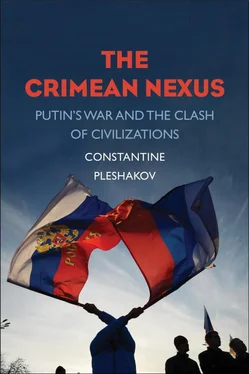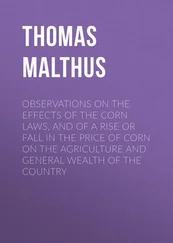Putin’s geopolitical rationale had been based on the premise that although Turkey is a NATO country, it is thoroughly un-Western, and in the previous decade progressively anti -Western. That is still true, but Turkey became Russia’s enemy the moment Moscow intervened militarily in the Syrian conflict, and the Turkish Stream project stalled.
In the meantime, Gazprom agreed to buy out the Western companies that had signed up for the aborted South Stream—Italian Eni, German Wintershall, and Electricité de France. The contractor to build the South Stream was the Italian company Saipem, and until the spring of 2015, Gazprom paid Saipem the costs of keeping its two enormous pipe-laying vessels in the Black Sea, idling at the Bulgarian port of Varna. [26] Elena Mazneva and James Kraus, “Gazprom to Buy Out Partners in Canceled South Stream Project,” Bloomberg, December 29, 2014, www.bloomberg.com/news/articles/2014-12-29/gazprom-to-buy-out-eu-partners-in-canceled-south-stream-project (retrieved March 30, 2015); Elena Mazneva and Marco Bertacche, “Gazprom Said to Pay Saipem for Vessels at Dropped Black Sea Link,” Bloomberg, March 6, 2015, www.bloomberg.com/news/articles/2015-03-06/gazprom-said-to-pay-saipem-for-vessels-at-dropped-black-sea-link (retrieved March 30, 2015).
To keep its energy monopoly in the Black Sea area, Moscow strongly discourages every attempt at developing fracking in Ukraine and Romania. In December 2014, Chevron backed out of a deal with a government-owned Ukrainian company to develop gas fracking in western Ukraine, negotiated a year earlier. [27] “Chevron reshila vyiti iz slantsevogo proekta na Ukraine,” Lenta.ru, December 15, 2014, http://lenta.ru/news/2014/12/15/chevron/ (retrieved December 15, 2014).
NATO’s secretary general at the time, Anders Fogh Rasmussen, believed that Moscow was underwriting Eastern European environmentalists’ anti-fracking campaigns: “I have met allies who can report that Russia, as part of their sophisticated information and disinformation operations, engaged actively with so-called non-governmental organizations—environmental organizations working against shale gas—to maintain European dependence on imported Russian gas.” [28] Fiona Harvey, “Russia ‘Secretly Working with Environmentalists to Oppose Fracking’,” The Guardian , June 19, 2014.
After the annexation, the Russian middle class fell into a strange euphoria, turning a blind eye to the diplomatic, financial, and political costs of Putin’s Crimean Reconquista. Flights to the peninsula were overbooked: people felt moved to support the region’s economy. #CrimeaIsOurs became the hashtag of Russian social networks.
Basking in popularity, Putin interpreted the future of Crimea casually, giving simple answers to difficult questions. Russia had just developed Sochi, with its expensive hotels empty since the 2014 Winter Olympics; now it had to fill another resort in the face of the world’s disapproval. Putin dismissed the problem, saying that Sochi would be for the “moneyed” and Crimea for the “ordinary people.” Plans were made to open casinos, to turn Crimea into a Russian Las Vegas. But very quickly, Crimeans realized that the bright future promised by Moscow was far away, if it was to come at all.
The peninsula got 80 percent of its electricity and 85 percent of its water from Ukraine. Now Kiev retaliated. Power outages plunged Crimean towns into darkness. Ukraine shut down the North Crimea Canal, which supplied the peninsula with Dnieper River water, effectively killing large-scale agriculture in the region. Crimea had gotten nearly 90 percent of its imports by rail. The railroads, naturally, passed through Ukraine, and now shut down. [1] David M. Herszenhorn, “Kiev Blamed for Blackout in Capital of Crimea,” New York Times , March 24, 2014; “Rossiiskiye zhurnalisty vyiasnili za schet chego zhivet ekonomika Kryma,” Novosti Kryma , March 4, 2014, http://news.allcrimea.net/news/2014/3/4/rossiiskie-zhurnalisty-vyyasnili-za-schet-chego-zhivet-ekonomika-kryma-6529 (retrieved April 2, 2014).
The Kerch Straits crossing had been better served in Marco Polo’s time. Ferries were few. Moscow either had not foreseen the closure of the land route to Crimea or decided travelers would put up with hardship. Regular closures of ferries because of inclement weather were a Kerch staple, but they had never been more than an inconvenience. Now, whenever a hurricane-force northeaster shut down traffic for five days in a row, it was a problem . Fistfights flared up; truck drivers mutinied, blocking the landing altogether. [2] “Pereprava v Kerchi ne budet rabotat’ neskolko dnei iz-za shtorma,” Novosti Kryma , November 19, 2014, http://news.allcrimea.net/news/2014/11/19/pereprava-v-kerchi-ne-budet-rabotat-neskolko-dnei-izza-shtorma-25747 (retrieved November 19, 2014).
Crimeans found themselves on an island—shipwrecked.
On the eve of the annexation, in December 2013, out of 2.3 million Crimeans, only 251,000 were employed. Even those with jobs were, as I mentioned, the worst-paid workers in Europe. Technically, Crimea should have been considered a catastrophe, with each working person supporting eight dependents, and on the scantiest of wages. But things in the post-Soviet space are rarely what they seem. Since 1991, Crimea had grown a robust shadow economy serving 6 million tourists a year: rooms for rent, food stalls, guided tours, escorts, illicit substances, all bought with cash. At least 70 percent of hotels, hostels, and vacation rentals operated in the shadow economy. Obviously, none of their revenues reached the treasury in taxes. Kiev subsidized 52 percent of Crimea’s budget. [3] “Kurorty Kryma otrabotali v teni,” Novosti Kryma , October 4, 2014, http://news.allcrimea.net/news/2014/10/4/kurorty-kryma-otrabotali-v-teni-22959 (retrieved October 5, 2014); “Chto takoye Krym: tsifry i fakty,” Novosti Kryma , March 8, 2014, http://news.allcrimea.net/news/2014/3/8/chto-takoe-krym-tsifry-i-fakty-6949/ (retrieved October 5, 2014).
Putin had doubled Crimeans’ pensions and state employees’ salaries, but most workers nevertheless took a hit. First, small businesses were now taxed (registering all rentals had become mandatory), and although Russia was hardly a paragon of law-abidance and its taxation rate is among the lowest in the world, this was a loss for entrepreneurs spoiled by Kiev’s lenience. Second, despite the patriotic fever in mainland Russia, in the summer of 2014 Crimea got barely half of its typical tourist flow: it was a conflict zone, its transportation link to the mainland had been severed, and so had its water and energy supplies. Three million tourists visited, versus 5.9 million in 2013. These numbers failed to improve during the 2015 season. [4] “Kurorty Kryma otrabotali v teni”; “Krymskie kanikuly: turisticheskii sezon-2015,” Forbes.ru, August 14, 2015, www.forbes.ru/sobytiya-photogallery/obshchestvo/296297-krymskie-kanikuly-turisticheskii-sezon-2015 (retrieved August 21, 2015).
There are only a handful of established businesses on the peninsula. Crimea’s tourism sector had failed to develop into an industry, first because of the overcentralized management from Kiev and Moscow, then because of the chaos of the transition period with its gangster privatization and consequent random takeovers. Environmental degradation had undermined the fisheries; the famed Black Sea oysters became all but extinct, eaten by a stowaway Pacific mollusk that had arrived on ship bottoms in the 1950s, the Sea of Azov sturgeon overfished by poachers. Crimean agriculture still harvests the follies of central planning. Growing rice in Crimean steppes inherently prone to droughts proved ultimately unsustainable. A noxious profitable plant tobacco, when grown on Crimean plantations, is just noxious: apparently, its quality has not improved one tiny bit since the 1850s, when Leo Tolstoy complained about its disgusting taste in his Sevastopol diary. [5] Moskvich, Prakticheskii putevoditel’ po Krymu , 6; Tolstoy, Dnevniki i zapisnye knizhki, 48.
Читать дальше












